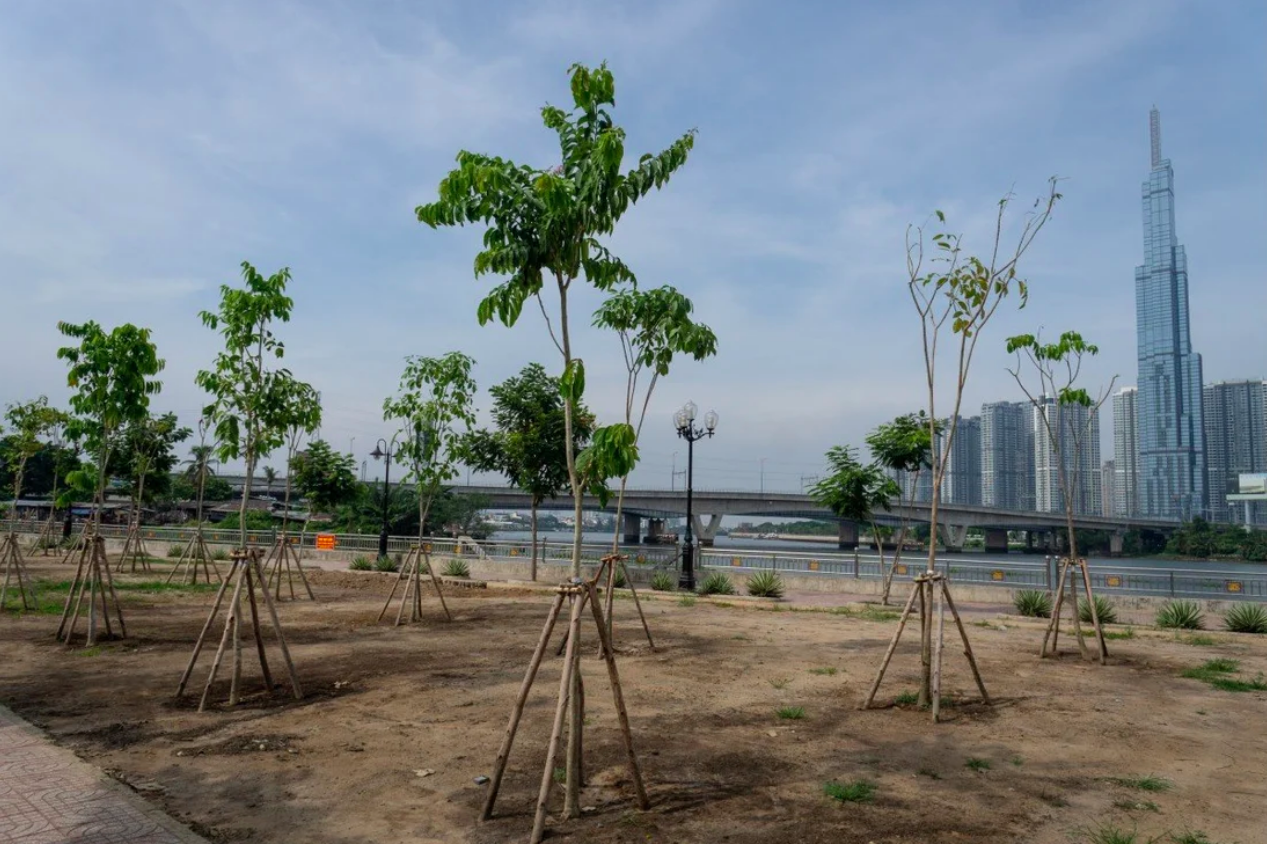
For residents of Vietnam’s biggest city, the sight of trees being cut down for development is not uncommon.
In 2017, 258 trees that had dated back to the French colonial period were removed from a major street in central Ho Chi Minh City for the construction of a bridge. Last month, city officials announced that 178 trees on the same road would be cut down or relocated for the renovation of a park along the Saigon River.
Such actions come despite Ho Chi Minh City having just 0.55 square metres of public park per resident, compared to 30.3 square metres per person in Singapore and 41 square metres per capita in Seoul, according to local media.
Meanwhile, air pollution – a problem that trees can help to alleviate – has become the top environmental concern for Vietnamese. Hanoi, the capital, has had some of the worst air quality in the world in recent years, while Ho Chi Minh City also suffers heavily.
There may be hope on the horizon for Vietnam’s heavily developed urban areas though, in the form of an ambitious government plan to plant 1 billion trees nationwide by 2025.
First proposed by former prime minister Nguyen Xuan Phuc in the wake of a devastating string of typhoons and tropical storms that killed dozens and caused record flooding and landslides in central Vietnam late last year, the 1 billion trees programme is already taking root.
According to the official decree approving the plan, which is only available in Vietnamese, 690 million trees will be planted in urban and rural areas, specifically on street pavements, in parks, and on the premises of schools, hospitals, factories, export processing zones and other facilities.
The remaining 310 million will be allocated for forested areas, though largely in production forests, which are frequently cut down for the timber sector.
This came as a surprise to To Xuan Phuc, a programme analyst at the international NGO Forest Trends.
“It’s interesting to me,” he said. “When Vietnamese people hear about 1 billion trees, we think about forests. Of course urban and industrial areas are important, but not as important for preventing and mitigating the impacts of floods and landslides caused by tropical storms.”
The government’s overall goal is to “improve the quality and value of forest ecosystems, promote the role of forests and trees in socio-economic development, protect the ecological environment and natural landscape, and limit negative impacts from the extremes of climate change”.
The last aspect is particularly relevant to central Vietnam, which is expected to be hit by increasingly strong typhoons each year, but this is not the focus of the plan. It is not clear why the majority of trees have been allocated for urban areas, and the Ministry of Agriculture and Rural Development, which is overseeing the programme, did not respond to a request for comment.
City and provincial governments, meanwhile, are moving forward. Ho Chi Minh City aims to plant 500,000 trees by the end of 2021, though it is not clear exactly where these trees will be planted.
Lam Dong province, home to the tourist destination of Da Lat, will plant 50 million trees by 2025, with 70 per cent of those going to urban areas.
Duong Duy Khanh, forest restoration coordinator at WWF-Vietnam, hoped for a greater focus on mountainous regions.
“One billion trees is good, but because we are working in biodiversity and conservation specifically, we’re concerned more with improving forest quality and planting trees in forests, not urban areas,” he said. “In our view, forests should be improved as much as possible.”
Over the last two decades, national reforestation programmes have improved Vietnam’s overall tree cover, which is now at 42 per cent, but these initiatives often relied on non-native species such as acacia.
Acacia plantations, which are harvested on five- to seven-year rotations for paper and timber production, now cover huge stretches of central Vietnam, the region hit hardest by last year’s typhoons. Acacia is a tall, thin tree that is easily knocked over by strong winds, contributing to landslides, and mono-crop acacia plantations offer no benefit for wildlife since they do not contain food sources.
The government directive acknowledges this, noting that trees must be “suitable to ecological conditions and farming practices of each locality and specific area … with a high protective effect”.
Phuc said this was promising.
“Instead of planting acacia or other fast-growing trees, we should be introducing indigenous species that can maintain the land for a much longer time and help prevent disasters,” he said. “The 1 billion trees plan discusses species composition, which is good, and acacia isn’t there, so they’re focusing on species that could better prevent landslides.”
Phuc also posits that the Ministry of Agriculture and Rural Development is focusing on urban areas because there simply isn’t enough available land to plant huge numbers of trees in upland parts of the country.
“Basically, we don’t have land resources for planting trees,” he said. “Now, we have quite a lot of land that could be used, but it is managed by local households, and you cannot ask them to plant trees how you want. It’s extremely difficult to find enough land, and I think the ministry realises this.”
Wherever the trees are planted, Khanh said Vietnam could not wait any longer.
“What we do now will have an impact over the next 20 or 30 years,” he said. “And in central Vietnam, people are already seeing the impact of typhoons and disasters from climate change.”






